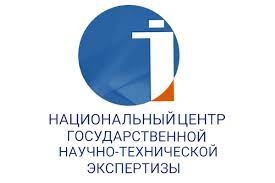The gender aspect of learning complex grammatical categories (based on the Romani language)
https://doi.org/10.55491/2411-6076-2025-1-92-105
Abstract
The Roma children in Europe face discrimination because of their limited knowledge of the official language of the country where they live. However, the amount of research on their mother tongue knowledge is very limited. There are no standardized tests on Romani. The present study here is an attempt to develop a test in Romani language - the mother tongue of Roma children in order to test their knowledge in their mother tongue. The paper presents results from research conducted among preschool Roma children from Zagreb, Croatia. The children are involved in a community preschool center where they learn Croatian and get prepared for primary school education. 30 Roma children (n = 18 girls and n = 12 boys) between 3-6 years old are tested with a test in Romani language (Kyuchukov and de Villiers, 2014). The test measures the knowledge of the children on different grammatical categories from Romani.
The goal of the study is to show how much Roma children know from the grammar of their mother tongue.
For this purpose the children are tested with specially designed tests. The children involved in the study are tested individually in the rooms of the community center. The results are compared by age and gender. The children show different levels of knowledge of Romani grammatical categories based on their gender. The boys have higher knowledge which is statistically significant (ANOVA) than the knowledge of the girls. The knowledge on the grammatical categories relates to the performance of the Theory of Mind test in Romani. The older children are better performing the Theory of Mind tests and the boys show better performance of the “mis displacement” False belief task. The article answers the question: “Why are boys better in Romani than the girls?” The paper brings new knowledge for preschool educators. Bilingual children in some cultures have different knowledge of their mother tongue and they perform the Theory of Mind tasks differently, based on their gender. These kinds of studies are important for the practice, because they suggest different approaches to language education between boys and girls.
About the Author
H. KyuchukPoland
Huseyin Kyuchuk, Doctor of Pedagogical Sciences, Professor, Academician of MANPO
Katowice
References
1. Abu-Haidar, F. (2013). Language loyalty: The case of Algerian immigrants' children in France. Arabic Sociolinguistics (pp. 59-72). Routledge.
2. Agular, C. et al. (2020). Early inventions tackling inequalities experienced by immigrant, low income, and Roma children in 8 European countries: a critical overview. European early childhood education research journal, 28(1), 58-76.
3. Atanasov, A., Slavova, V., Andonov, F. (2016). A Statistical Study of First Language Acquisition. Computer Science and Education in Computer Science, 1, 101-110.
4. Berko-Gleason, J., & Greif, E. B. (1983). Men's speech to young children. Language, gender and society, 140-150.
5. Helakorpi, J., Lappalainen, S., & Sahlström, F. (2019). Becoming tolerable: Subject constitution of Roma mediators in Finnish schools. Intercultural Education, 30(1), 51-67.
6. Khalfaoui, A. et al. (2020). Bridging the gap: engaging Roma and migrant families in early childhood education through trust-based relationship. European early childhood education research journal, 28 (5), 701-711.
7. Kroll, J. et al. (2012). Juggling two languages in one mind: What bilinguals tell us about language processing and its consequences for cognition. Psychology of Learning and Motivation, 56, 229-262.
8. Kyuchukov, H. (2020). The role of oral traditions in the language development of Roma children. In: E. Ogrodzka-Mazur, G. Blahut and G. Piechaczek-Ogierman (eds) Poznawanie kultur: ku edukacji antropologicznej i miedzykultorowej. Torun: Wydawnictwo Adam Marszalek, pp. 39-54.
9. Kyuchukov, H. (2021). The Roma Family’s Oral Culture and Folklore and Language Acquisition by Children. In: H. Kyuchukov, S. Zahova, and I. Duminica (eds) Romani history and culture. Munich: Lincom, pp. 227-235.
10. Kyuchukov, H. & de Villiers, J. (2014). Roma children’s knowledge on Romani. Journal of Psycholinguistics, 19, pp. 58-65.
11. Martin-Jones, M., & Romaine, S. (1986). Semilingualism: A half-baked theory of communicative competence. Applied linguistics, 7(1), 26-38.
12. Protassova, E. & Voeikova, M. (2007). Diminutives in Russian. I. Savickienė and W. U. Dressler (eds.). The Acquisition of Diminutives: A cross-linguistic perspective. Amsterdam: Benjamins, pp. 43-72.
13. Sankaranarayanan, G. (2002). Repetitive forms in Indian languages, 1.
14. Šebesta, K. (1999). Od jazyka ke komunikaci: didaktika českého jazyka a komunikační výchova. Naklad. Karolinum.
15. Strataki, I., & Petrogiannis, K. (2021). Greek Roma mothers’ relationship with education: aspirations and expectations regarding the educational future of their children. Contemporary Social Science, 16(4), 480-493.
16. Syamalakumari, B. (2003). Pre-primary language development materials. Language in India, 3.
17. Warastuti, R. D. (2011). Gender differences in children’s language acquisition and language development. Journal Musawa, 3(2), 221-234.
Review
For citations:
Kyuchuk H. The gender aspect of learning complex grammatical categories (based on the Romani language). Tiltanym. 2025;97(1):92-105. (In Russ.) https://doi.org/10.55491/2411-6076-2025-1-92-105

















